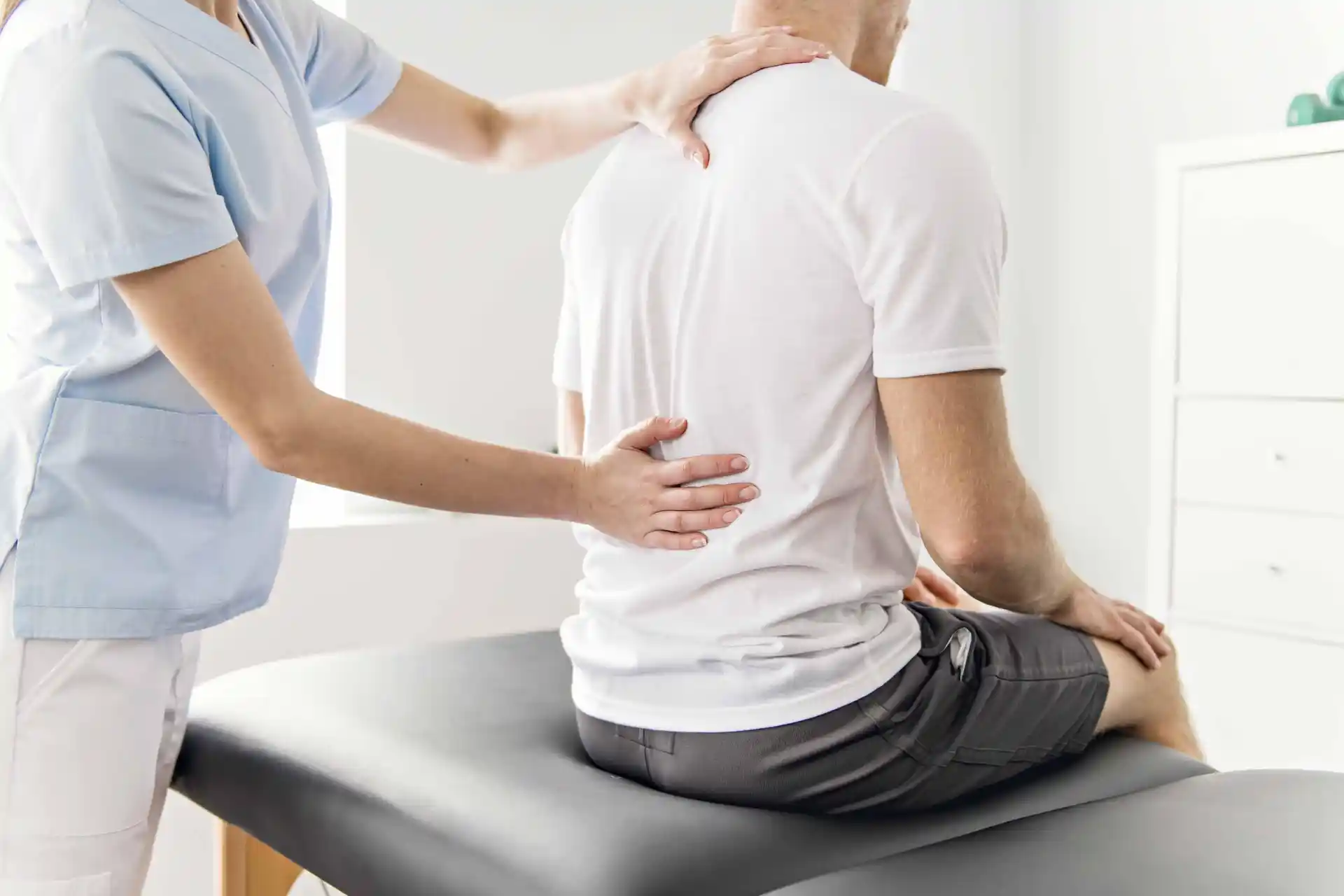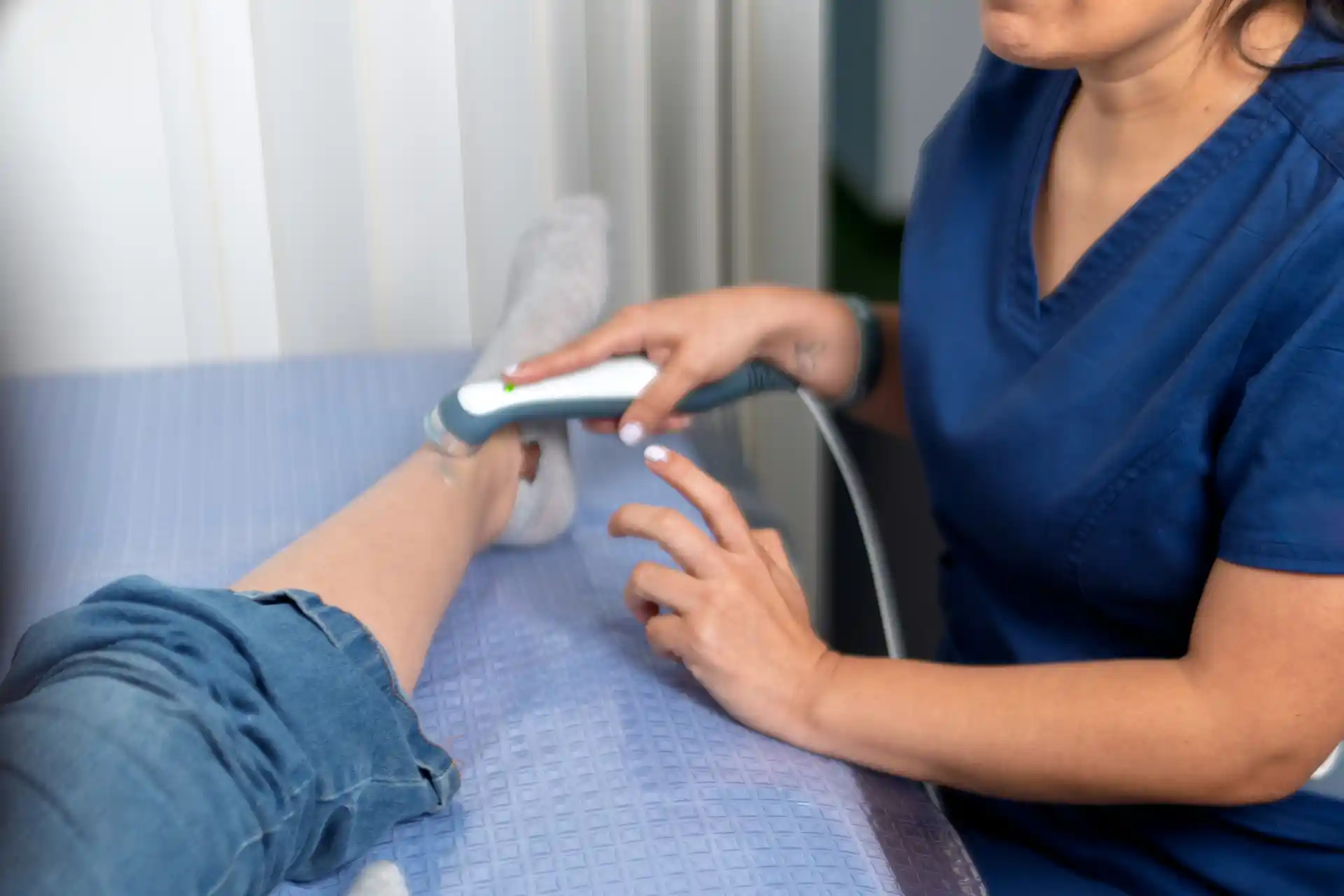If you have ever wondered how to release chronically tight muscles in a sustainable way, you are definitely not alone.
1 in 4 people deal with ongoing muscle pain and stiffness, often caused by factors such as stress, dehydration, and habitual inactivity (Cleveland Clinic).
The good news? You can take several simple, science-supported steps to release muscle tension naturally and build flexibility that lasts. Below, you’ll find clear, research-backed guidance to help you move comfortably and feel stronger each day.
Recognize Chronic Muscle Tightness
Understanding why muscles get chronically tight is the starting point in relieving the tension. Some sources of prolonged stiffness include:
- Repetitive motion: Doing the same movement for hours, like typing or lifting.
- Overuse: Exercising without enough rest between sessions.
- Postural imbalances: Slouching or standing unevenly stresses one side of the body.
- Stress and anxiety: Ongoing muscle contraction without release can create lasting discomfort.
- Underlying conditions: Certain health conditions such as myalgia and EhDS can cause general muscle pain.
By identifying your triggers early, you can stop tension before it turns into a full-blown strain or chronic pain pattern.
Spot The Early Signs
Most people first notice tightness as a dull ache or “knot” that gets worse when sitting or standing too long. You might feel limited motion when turning your neck or a sharp twinge when stretching your back or legs.
These small cues are worth noting—because catching stiffness early prevents more serious injuries like pulled muscles or repetitive strain syndromes.
- Persistent tension in shoulders, neck, or lower back
- Reduced range of motion when bending or twisting
- Occasional sharp pain during certain movements
Paying attention to these signals can help you address tightness before it leads to more severe strains, like a pulled muscle in back or repetitive strain injury.
Read more about conditions that may be attributed to chronically tight muscles: chronic pain, myofascial pain, and muscle injuries.
Adopt Healthy Daily Habits
Muscle health depends on daily habits. Hydration, nutrition, posture, and movement all work together to keep your body balanced and relaxed.
Always consult with a healthcare professional before starting a new diet or treatment regimen for your muscle condition.
Stay Hydrated
Dehydrated muscles cramp and tighten more easily. Experts recommend about 2 liters of water per day (Cleveland Clinic).
Hydration keeps electrolytes balanced and supports healthy circulation. If plain water bores you, try flavoring it with fruit or switching to electrolyte drinks after workouts.
Include Calcium and Magnesium
Both minerals are crucial for muscle contraction and relaxation. Aim for 1,000 mg of calcium and 310 mg of magnesium daily.
- Calcium: Found in dairy, leafy greens, and fortified foods
- Magnesium: Found in spinach, beans, nuts, and seeds
Magnesium supplements or Epsom salt baths may also help ease cramps (Medical News Today).
Adjust Your Posture
Slouching tightens muscles in the shoulders, neck, and lower back. To prevent this, take short posture breaks every hour—stand up, roll your shoulders back, and align your head over your spine.
Use a small lumbar cushion to maintain your back’s natural curve while sitting. Over time, these micro-adjustments can dramatically reduce tension.
Incorporate Targeted Exercises and Treatment
Stretching is one of the most direct ways to tackle persistent tightness, particularly when practiced consistently for weeks or months.
Sustainable stretching routines, introduced over a period of 3 to 12 weeks, can noticeably decrease muscle stiffness and ease that sense of constraint.
Dynamic Vs Static Stretching
- Dynamic stretching involves moving your joints and muscles through a comfortable range of motion repeatedly. Examples include arm swings, leg swings, or gentle torso twists. This approach can be especially helpful as a warmup to boost blood flow and muscle temperature.
- Static stretching involves holding a specific position for typically 20 to 60 seconds, allowing your muscles to lengthen gradually. Over time, this method can increase flexibility and mitigate chronic tension in areas like your calves, hamstrings, or shoulders.
Foam Rolling And Self-Massage
Foam rolling complements stretching by applying gentle pressure to trigger points or tight spots.
Foam rolling prior to a workout, followed by dynamic stretches, may reduce muscle stiffness and improve your range of motion. Simply place a foam roller on the floor, position the targeted muscle on top, and roll slowly back and forth.
If you encounter a tender area, pause for a few extra seconds to let the tension release. You can also try using a massage gun on your legs or back for a deeper, controlled self-massage.
Whether you use a roller or a handheld device, aim for moderate pressure that feels relieving, not painful.
Explore Massage Therapies
Massage therapy can be a powerful ally when you want deeper relief for severe or recurring tightness. Even a single 20-minute session has been shown to reduce muscle tension along the neck and shoulders.
Different massage types cater to different needs, but each focuses on improving blood flow, breaking down knots, and enhancing muscle elasticity.
Apply Local Heat
Heat therapy increases blood circulation, relaxes muscle fibers, and can activate your parasympathetic nervous system, helping you feel calmer overall.
A 2022 analysis of previous research noted that applying gentle heat offers short-term relief from musculoskeletal issues, with improvements in pain and daily function (Medical News Today).
Some useful ways to apply heat include:
- Warm compress or heating pad
- Warm bath or hot tub
- Warm towels or reusable heat packs
For aches in your neck or back, a microwaveable heat wrap can mold to the exact shape of your muscles. Just be careful not to apply excessive heat that might irritate your skin.
Consider Professional Guidance
If your muscle tightness doesn’t respond to home care—or if you suspect a deeper issue—consult a healthcare professional or physical therapist.
They can identify specific weak spots or imbalances contributing to your symptoms and design a personalized recovery plan.
What Physical Therapy Can Do
Therapists often use hands-on stretching, ultrasound, or guided exercises to restore flexibility and strength. These treatments not only relax muscles but also teach your body better alignment and movement patterns to prevent recurrence.
Seek help immediately if you experience:
- Sudden, severe pain that won’t ease
- Swelling or redness around a muscle
- Fever, chest pain, or breathing trouble
These symptoms could indicate a serious condition that needs prompt evaluation (Cleveland Clinic).
Practical Tips For Relief And Prevention
While the deeper causes of stiffness can vary from one person to another, you can follow a set of best practices to maintain healthier, more flexible muscles every day.
Here is a quick list of suggestions to keep on your radar:
- Stay hydrated: Aim for 64 oz of water daily.
- Move regularly: Gentle exercise like walking or swimming improves circulation.
- Practice relaxation: Breathing exercises or mindfulness reduce tension from stress.
- Stretch daily: Yoga or Pilates combines strength, control, and flexibility.
- Build muscle gradually: Use light resistance and progress slowly.
- Rest weekly: Allow at least one full rest day for recovery.
- Eat nutrient-rich foods: Protein, calcium, and magnesium support muscle repair.
A balanced approach is typically the most effective. By layering small changes, such as short standing breaks and mindful hydration, you can protect your well-being without feeling overwhelmed.
Seek RELIEF®
RELIEF® is an evidence-backed treatment that targets dysfunctional fascia—the connective tissue that surrounds and supports muscles. When fascia becomes tight or adhered after injury, it can restrict movement, cause pain, and slow recovery.1,2
Using a minimally invasive hydrodissection technique, RELIEF® gently separates and releases adhered fascia and may help restore healthy tissue mobility and improve muscle recovery—without the need for steroids, surgery, anesthesia, or extended downtime.3,4,5
If you’re in the Miami area and recovering from a muscle injury, contact us today to schedule a consultation and learn how RELIEF® can help restore your mobility and comfort.

.webp)




.svg)